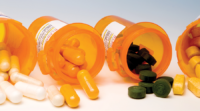As an independent community pharmacy owner, cash flow management may not be something you think about every day.
But you need to understand what not to do if you want to avoid major cash flow problems that could cripple your business.
Let’s consider Joe’s Pharmacy. Joe’s Pharmacy ran out of cash and couldn’t pay its bills. It had to close its doors.
Many factors led to Joe’s cash flow problems, including past-due receivables and poor inventory management. But those problems could have been avoided—or at least remedied.
In parts one and two of our crash course on cash flow, we discussed cash flow basics and provided tips for better cash flow management. In this final installment, we’ll teach you how to avoid common cash flow mistakes.
Mistake 1: Not monitoring your receivables
Poor management of your pharmacy’s accounts receivables almost always leads to cash flow problems.
Remember, as long as your receivables are sitting on the balance sheet, they’re not putting cash in your pocket.
Monitor your receivables on a weekly or monthly basis to make sure you’re receiving payments due from third party payers.
Pay attention to the number of days it takes before a receivable gets converted to cash. It should take less than 20 days on average for credit sales and insurance claims.
If you notice past-due receivables, it’s time to start making calls. Contact the patient to verify his or her insurance information, then contact the insurance company to ensure the prescription was billed correctly.
 Proven Strategies Guaranteed to Boost Pharmacy Cash Flow (+Advanced Formulas)
Proven Strategies Guaranteed to Boost Pharmacy Cash Flow (+Advanced Formulas)
These little-known strategies and advanced formulas will free up cash and grow your pharmacy. Read the article.
Mistake 2: Stocking too much inventory
Excess inventory on hand may sound good in theory, but it’s not good for cash flow.
If most of your cash is tied up in inventory that isn’t selling, it’s going to be difficult to replenish your bank account.
Manage your inventory better by being aware of your inventory levels and only stocking what you need. Focus on fast-moving products that result in sales.
You should also consider your purchasing. How well are you purchasing? Do you have a beneficial wholesaler relationship? Make sure your wholesaler provides you with the tools you need to properly manage your inventory to avoid running into cash flow problems.
Mistake 3: Overextending your business
For your business to succeed, you need to set clear goals and have a path for growth.
But you also need to accomplish that growth at a reasonable rate.
Overextending your business means investing more money in new opportunities—and more expenses—leaving you less cash for the short term (such as day-to-day operations).
Plan your growth in advance and don’t do too much at once. Decide which investments are necessary for you to achieve your goals, and set a budget for those investments.
Mistake 4: Ignoring declining sales
Increased competition can lead to a decline in sales at your independent pharmacy.
And with margins as thin as ever thanks to declining reimbursement rates and added fees, you can’t ignore a decrease in sales. Or, you won’t have enough cash in the bank to continue running your business.
Adapt your business model to stay relevant and keep up with the rapidly evolving healthcare marketplace.
Get to know your patient base and find out how your pharmacy can better meet their needs.
For example, expand your scope of practice by offering diversified revenue opportunities, such as immunizations or disease education programs.
Don’t sit by and watch your business deteriorate while your competitors prevail.
Mistake 5: Not having any buffer money
Almost every business encounters cash flow problems at some point, no matter how hard they try to avoid it.
If you don’t have a cushion to fall back on, a slow month of sales or an unexpected plumbing issue could mean disaster for your business.
Always maintain an account balance equivalent to at least two months of operating expenses. If you experience any unforeseen stalls to cash flow, you’ll have the money you need to keep your lights on and your doors open.
Maintain positive cash flow for your pharmacy business by avoiding these mistakes. For more cash flow advice, check out part 1 and part 2 of our crash course on cash flow.
Get more business tips and advice delivered right to your inbox. Sign up for our e-newsletter.


 Proven Strategies Guaranteed to Boost Pharmacy Cash Flow (+Advanced Formulas)
Proven Strategies Guaranteed to Boost Pharmacy Cash Flow (+Advanced Formulas)









